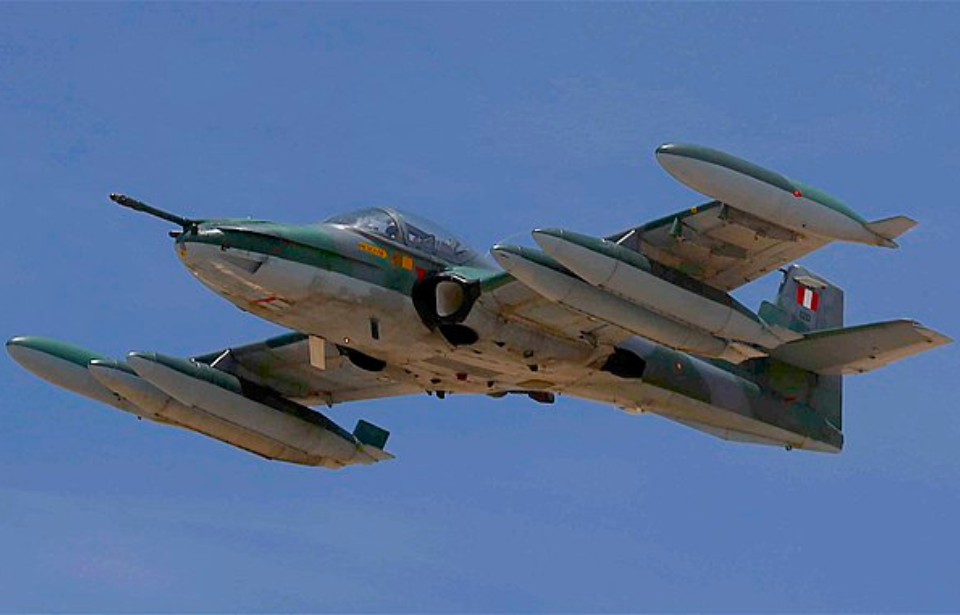The Cessna A-37 Dragonfly is a light attack aircraft developed in the United States and adapted from the T-37 Tweet trainer, which earned it the nickname “Super Tweet.” Designed for counterinsurgency and close air support, it saw extensive use by the U.S. Air Force during the Vietnam War.
Beyond Vietnam, the Dragonfly went on to serve with several allied nations, logging thousands of flight hours in combat and patrol roles. Remarkably, despite its 1960s origins, the A-37 remains operational today with six South American air forces, a testament to its durability and versatility.
Development of the Cessna A-37 Dragonfly
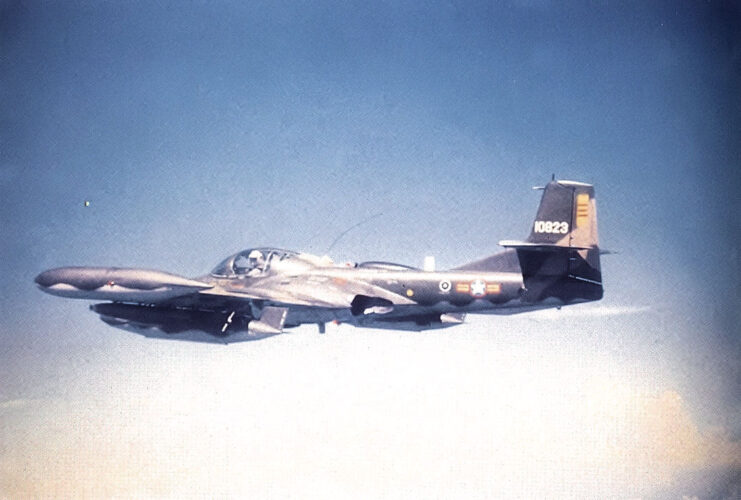
In the early 1960s, as the US became more involved in Vietnam, the need arose for a counter-insurgency (COIN) aircraft. COIN operations included forward air control (FAC), reconnaissance, air escort and ground support missions.
In 1962, the Air Force’s Special Air Warfare Center looked at the T-37C as the aircraft to fill this role. Seen as a promising fit with the necessary modifications, the service contracted Cessna for two prototypes. The YAT-37D was produced with shorter wings (three pylons on each), larger wingtip fuel tanks, a General Electric minigun, improved avionics and a more robust landing gear. The first prototype flew in October 1964.
Despite positive results, the program was stopped as interest faded. The decision seemed definite, with one of the prototypes being sent to the National Museum of the United States Air Force at Wright-Patterson Air Force Base, Ohio for public display (which it would do after being retired for a second and final time in 1970).
Continued escalation in Vietnam saw the increased loss of Douglas A-1 Skyraiders, renewing the need for a COIN aircraft. The Air Force, again, contracted Cessna for 39 AT-37Ds, which were later re-designated as A-37As, for testing. In 1967, to fast track the aircraft’s development, the A-37 was sent to Vietnam for combat evaluations.
Cessna A-37 Dragonfly specs
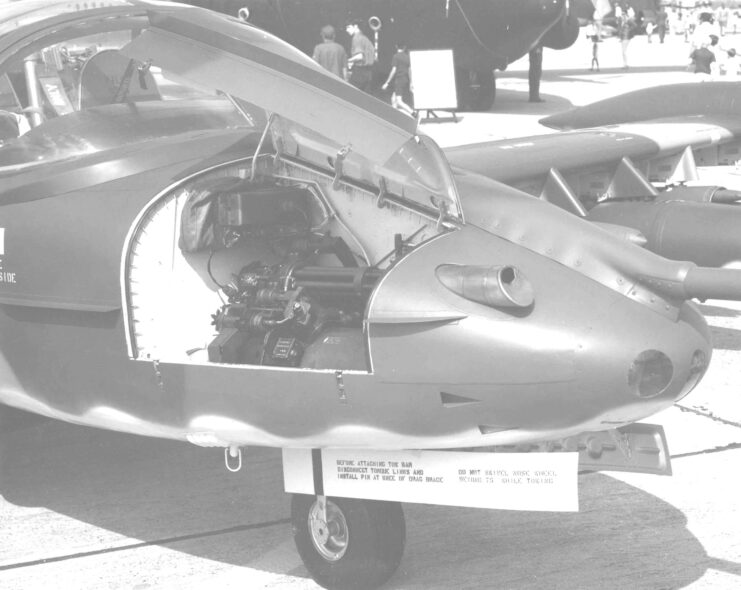
Despite its compact size, the A-37 Dragonfly boasted an impressive arsenal. Mounted on the right side of the aircraft’s nose was a single 7.62 mm General Electric GAU-2B/A minigun. Additional weaponry included bombs, napalm, SUU-11/A minigun pods, and rocket packs. With eight pylons—three under each wing and two beneath the main fuselage—the A-37 could carry up to 3,000 pounds of bombs, rockets and missiles.
Fuel tanks were mounted at the tips of both wings, and the aircraft was powered by two General Electric J85-GE-17A turbojet engines. Each provided 2,400 pounds of thrust, enabling a top speed of 485-507 MPH.
Baptism by fire
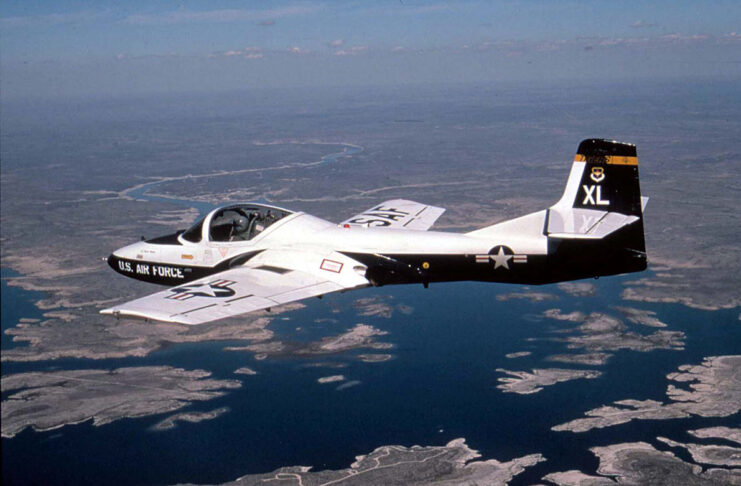
The first A-37A Dragonflies were sent to Vietnam in August 1967 as part of the Combat Dragon evaluation program, during which they flew close air support, FAC, helicopter escort and night interdiction missions.
This baptism by fire was unusual. As Lon Holtz, who piloted A-37s, McDonnell Douglas F-4 Phantom IIs and General Dynamics F-16 Fighting Falcons, stated in an interview with Smithsonian Magazine, “No other aircraft had ever gone into combat that hadn’t been tested previously. Other fighters were proven here in the States […] That’s not the case with the A-37. This aircraft went over to prove itself in combat.”
At the conclusion of Combat Dragon in December 1967, the A-37A had flown 3,000 missions and not a single aircraft had been downed by enemy fire. The only two lost were due to landing accidents. The A-37 Dragonfly had proven itself.
That being said, some issues were realized, mainly around the A-37’s lack of range and endurance. These and other problems were taken into consideration, leading Cessna to develop the A-37B. Purpose built, unlike the “A” variant, it featured larger fuel tanks, a refueling probe on the nose, a heavier fuselage and a stronger engine.
Service during the Vietnam War

In combat, the A-37 Dragonfly enjoyed pinpoint accuracy that others did not. Unlike swept wing aircraft that flew at high speeds, it was able to slow attack runs to only 100 MPH. This resulted in an average hitting range within a 45 foot radius of a target. As one forward air controller remarked, “Thank God, now I have somebody who can actually hit the d**n target.”
During the Vietnam War, A-37s were used by the Republic of Vietnam Air Force, as well as the US Air Force. In total, the aircraft flew 68,471 missions between 1967-74 (some sources say more than 160,000 combat sorties), focused on regions in South Vietnam. Despite valiantly taking part in the air war, the A-37 has been largely overlooked in favor of Vietnam’s “Heavy Metal,” including the F-4 Phantom II, the North American F-100 Super Sabre and the Republic F-105 Thunderchief.
After the conflict, the A-37 continued to serve with the Air National Guard and Air Force Reserve, before being replaced by the Fairchild Republic A-10 Thunderbolt II.
Cessna A-37 Dragonfly in Central and South America
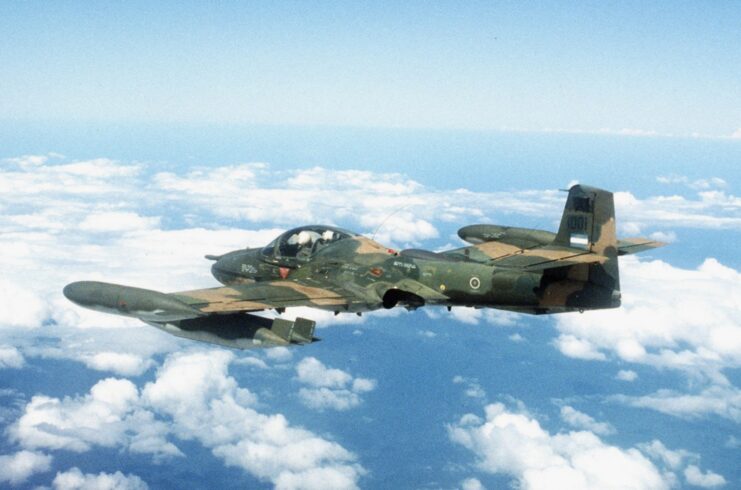
Outside of its American service in Vietnam, the A-37D went on to become a staple in Central and South America. Exported widely in the 1970s, the rugged and easy-to-maintain aircraft was a perfect match for the needs of regional air forces. Its small size, long endurance, and ability to operate from austere runways made it especially effective in counter-insurgency and counter-narcotics missions.
More from us: The Vought F-8 Crusader was Nicknamed the ‘Last of the Gunfighters’
In 1983, the Salvadoran Air Force received 21 A-37Bs and nine OA-37Bs to replace its aging Dassault Ouragans. The aircraft quickly became central to El Salvador’s air campaign during the country’s brutal civil war. By the time the conflict ended, only nine of the original fleet were still operational, underscoring the intensity of their use.
Today, the A-37 continues to serve well beyond its expected lifespan. Six nations—Colombia, El Salvador, Guatemala, Honduras, Peru, and Uruguay—still operate the aircraft, relying on its proven durability and effectiveness in both counter-insurgency and patrol roles.
